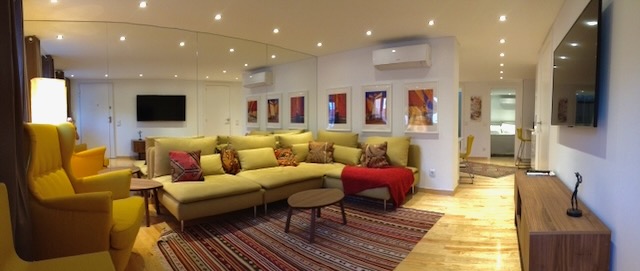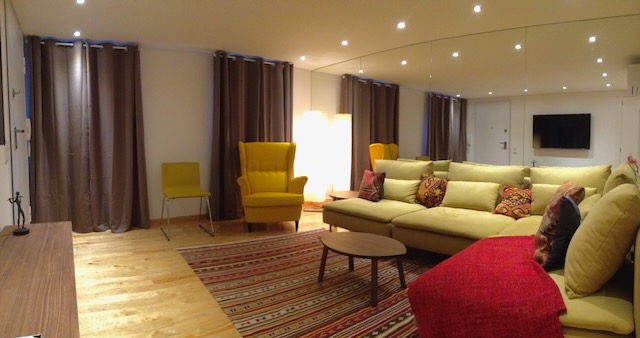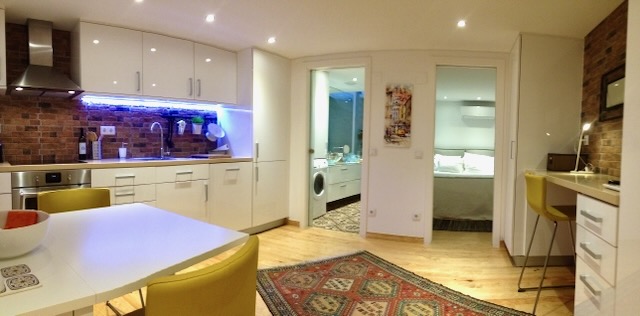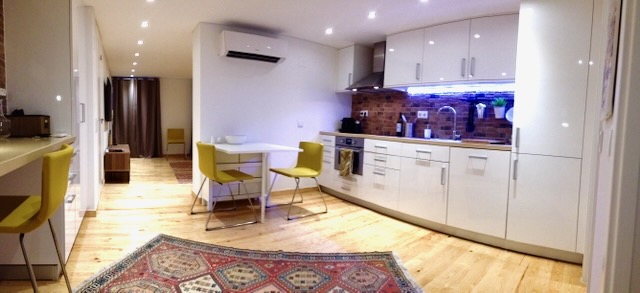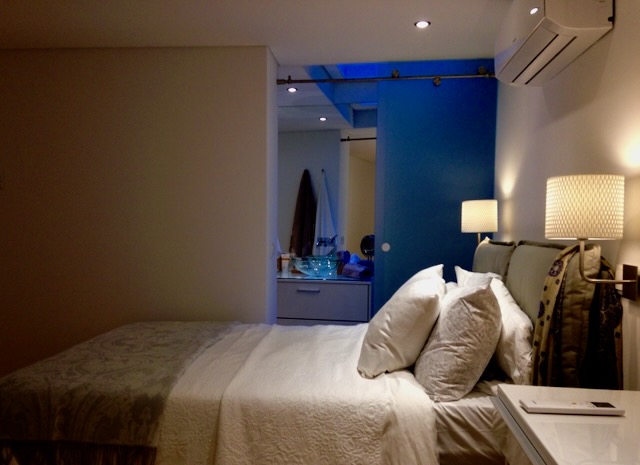The night sky exploded into a shower of color and light, silhouetted against the dark waters of Banderas Bay in the distance. To our left the golden dome of the church of the Señora de Guadalupe glowed bright, intermittently covered with long shadows cast by her iconic crown from the erupting show of light. Below the streets were crowded with spectators enjoying the spectacle and welcoming in the new year.
For it was New Years and we were celebrating the event with friends at the quintessential Gringo Gulch home of Paco and Frank, or better known singularly by friends as “The Boys”. They love to entertain and New Years is always their biggest party. Fresh from Paris and ladened with enough foie gras, champagne and cheese to more than feed the fifty or so guests, this one was looking to outdo all the others. Most are French, but the banter heard also includes Spanish and English, the three often combined and used in the same sentence. Dinner had recently concluded and the dancing had begun and would continue until the early hours of the morning.
Paco approached and wished us a Bonne Année followed by kisses and hugs. He’s accompanied by a fellow I couldn’t remember seeing before.
“This is Gil. He takes care of our apartments in Paris, mostly their renovation. But…”, he added with a mischievous smile, “…he’s also renovating apartments in Lisbon.”
We’d been talking earlier in the evening with the boys about what may be next after five years in the south of France. Things seem to happen to us in five-year cycles so we were due for a change and Portugal definitely was a place of interest. So this was rather serendipitous.
Gil was slim, dressed in what seemed to be a little-too-tight blazer with a white, recently ironed dress shirt, tailored trousers and highly polished loafers – definitely Parisian. He was French/Portuguese, raised in France by Portuguese parents and recently returned to Lisbon to start a business with his cousins, renovating properties in what he described as a booming market. Things were happening in Lisbon. He talked of the high energy level, the positive changes and his enthusiasm was addictive–we couldn’t wait to soon experience it for ourselves.
During the previous year, (the one that had just slipped by a few minutes earlier), we’d visited Lisbon and very much liked what we saw. The downtown area fronts the Tagus River while being surrounded by hills and was the only part that was flat and offered straight streets. On the hillsides roads and tramways meander up and down, over and around houses, parks and apartment buildings, all adding to its overall charm and character. And we were certainly charmed.
It helped that there were tax advantages to establishing residency in Portugal. The program was called the “Non-Habitual Residency” (NHR) and it involved making a financial investment in the country and remaining there for at least for six months of the year. In return we’d be exempt from any taxes on foreign income for a ten-year period. We decided that buying an apartment would be the best way to make that monetary commitment and both agreed that we’d like that apartment to be in Lisbon, right in the heart of it. And if we made this move, six months would not be a problem as we were now ready to fully break from Mexico and begin living full-time in Europe.
A few months later we found ourselves in an older model SEAT sedan with two of Gil’s cousins, zipping through the narrow, windy streets of Lisbon. Joao drove while Pedro talked incessantly, of what we had no idea. We understood nothing but assumed he was explaining where we were going and what we were seeing. We weren’t seeing much as the streets were so narrow all we saw when we looked out the side windows were the bottom of building facades. But then we’d pop up onto a high point, scramble out and take in a panoramic vista from one the city’s many viewpoints, or “miradouros,” found on Lisbon’s hilltops.
We finally resorted to Spanish saying we didn’t understand him–did no one speak English? The two looked at each other, spoke quickly and then Joao replied nao problema, got on the phone and soon we were off again in the car. Shortly after we stopped in front of an apartment building where a young attractive girl was standing by the curb. Joao pulled up and she climbed in the back with Florence and Pedro. I looked over at Joao and he said, with a grin, “Minha namorada, ela e Canadiense”. To which she replied, “Yeah, hi, I’m Claudia and Joao said you need a translator?” We sure did.
With Claudia in the car it was a tight fit, but by having her translate Pedro’s machine gun Portuguese we finally began to be able to communicate with one another. Claudia was born in Canada to Portuguese parents and she’d recently returned to Lisbon for her schooling where she eventually met Joao. There was definitely a contrast between the two as Joao was continually operating at high speed with a furrowed brow broken occasionally with the release of a loud laugh, where Claudia was laid back, always a sweet smile and seemingly not a care in the world. An unlikely couple, but it seemed to work.
After the blitz tour of Lisbon they proceeded to show us three properties they were currently working on. The first was a renovation job on a house they’d purchased about 20 minutes outside of Lisbon. It had the strangest layout and the plans they had for it were even stranger. The more they explained what their plans were the more it seemed apparent there could be serious concerns over what the municipality would allow and not allow. A no-go from the get-go.
Next was an apartment in an older wooden building close to the popular neighborhood of Alfama. It’s the oldest district in Lisbon and the only area that survived the catastrophic earthquake of 1776. Here the streets are so narrow that for most not even a car can pass. It’s built on the side of a hill (as is much of Lisbon) with the castle of Sao Jorge perched at the top.
People must have been much shorter back then as doorways and ceilings are low. But the staircases are what really surprised us, seeming to be accidents waiting to happen. They are narrow and steep with very shallow treads (they also must have had rather small feet). It gives new meaning to “climbing” a staircase as you literally are climbing with a hand rail a necessity to help you make your way up.
We entered to what was mostly one large, empty room as it had literally been gutted. The still existing interior walls had no sheeting, and the perimeter plastered walls had certainly seen better days. The ceiling showed open wood beams and joists, with wood roughly cut from another era. The flooring was a mixture of wood planking and fake wood parquet. Joao explained they were planning to build out a two-bedroom apartment as he walked us through the layout. It was a very tight fit – putting two bedrooms in 47 m2 of space. Way too tight for us.
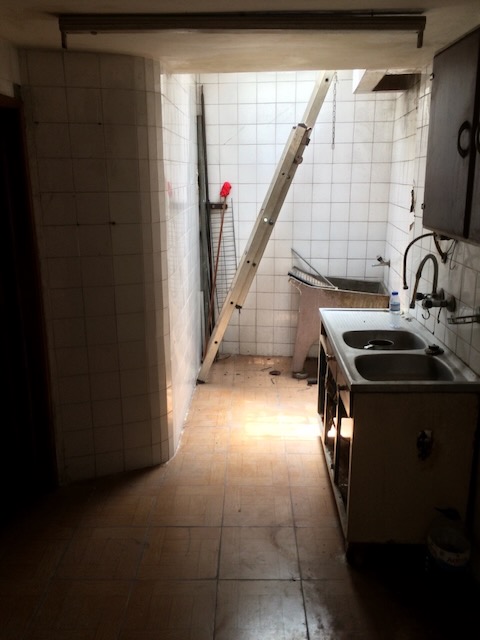
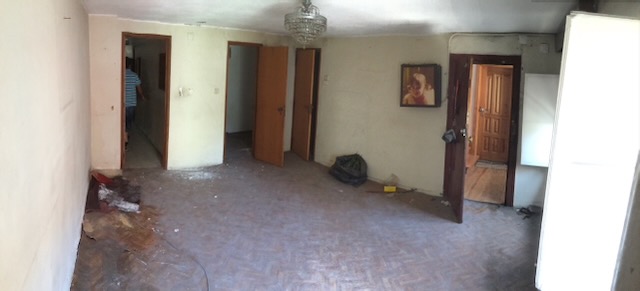
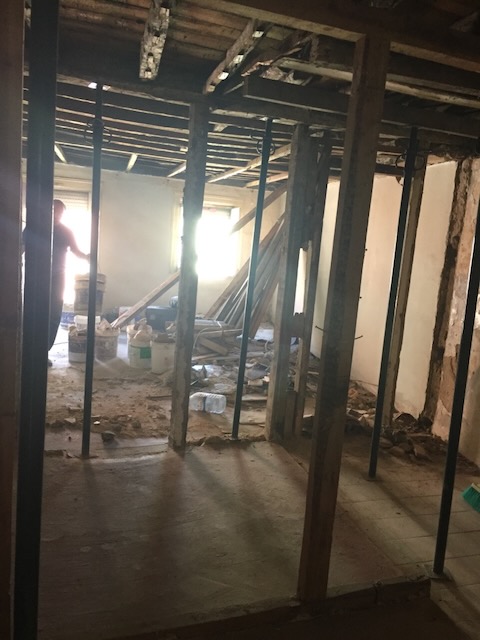
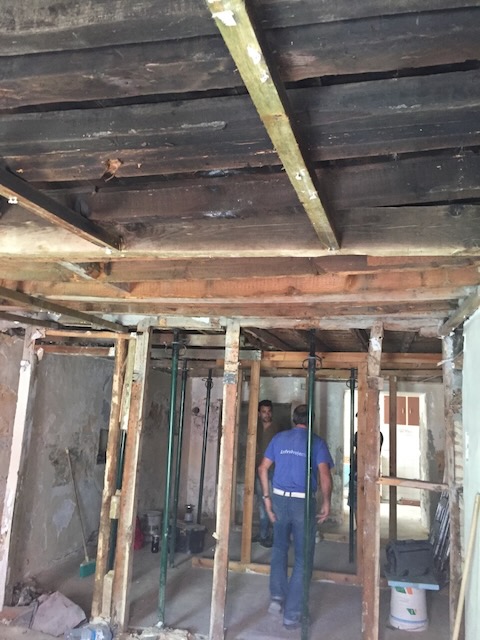
The next property was another apartment on a fourth floor with no lift and in an undesirable neighborhood. A non-starter.
After that they took us for lunch at a popular Portuguese restaurant on the waterfront, specializing, of course, in seafood. It was a feast as the plates just kept coming and coming. The food was wonderful, as was the company, but we were still far from finding what we had come all this way for, a place we’d be comfortable living in and calling home.
So we began visiting real estate agencies. There weren’t many back then, (compared to today where there seems to be one on every block), and the people who worked there didn’t seem to know much, or have much inventory to offer us. Those that did kept it close to themselves – there was little sharing of information between offices. Which meant having to visit multiple offices to find out what was actually on the market.
Coming from Canada I was used to a MLS system where all real estate agencies listed all their properties in one central database so it was easy to know what was for sale. But there was nothing like that in Portugal. But even if there was, there just didn’t seem to be that much available. Interest in Portugal had started and properties were being purchased very quickly–demand was greater than the supply. And what was available lacked character. We were used to open plans, with the kitchen/dining and living all in one large room. Nearly everything we saw were cut up in small separate rooms, and the bedrooms were even smaller. There were few that had terraces, but if they did they were just large enough for a couple of people to stand on, let alone sit.
We quickly realized that what we wanted and what we were going to get were far apart–our expectations needed to be lowered. After three full days of visiting agencies we’d come up with nothing.
At the end of the third day, over a glass of wine on the rooftop terrace of the Hotel do Chiado, I suggested to Florence that we reconsider the second apartment Joao had shown us. We were having no luck finding what we wanted, so why not just get something that was good enough, so we can make the move and then once in Lisbon, we could take our time to find a more suitable place. I picked up a napkin and drew out a floor plan I thought could work, making the apartment a one bedroom instead of two, which allowed all rooms to become a little larger. That napkin plan would eventually become our new home in Lisbon. Although not for long.
